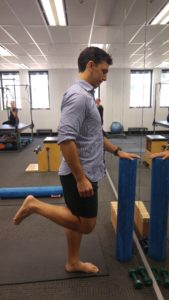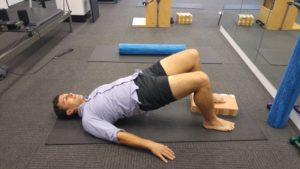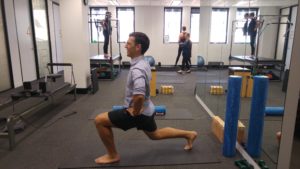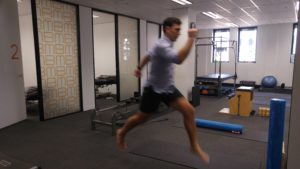As an avid Sports Physio, I am constantly inundated with questions from players on how to avoid injury or pain, usually during pre-season training. A common concern of older players is how to avoid pulling a “hammy”. During this pre-season to date, I have seen at least one hamstring injury per week, so I have compiled a list of top tips and exercises to reduce the chance of a torn hamstring before the season begins.
- Strength
Firstly, having enough strength in your hamstring is a priority. Two simple exercises you can do at home to ensure you are strengthening the hamstring correctly are standing hamstring curl and bridge with bias.

Secondly, making sure you have enough strength in surrounding muscles helps to offload the hamstrings so they are not trying to do all of the work. I commonly find weak glutes in patients with hamstring strains. A quick loading test will give you an idea if there is a difference in one glut compared to the other. The best test for this is to do single leg bridges on one leg and compare this to the other.
- Conditioning
Conditioning is just as important as strength. If your hamstring is not accustomed to propelling you as you accelerate quickly to try to dodge a defender, then risk of injury is amplified. Our past experience of running at full tilt, combined with another year on our odometer, often does not mix well.
Here are some exercises to ensure you are ready to put your legs through their paces to get maximum pace out of your legs:
An oldie but a goodie. This is a great warm up exercise for your hamstrings. Nice slow controlled walking lunges over 5-10 metres and repeated a handful of times.
Shuttle runs gradual build up
Everyone would have done shuttle runs in a team sport, we all remember them not so fondly as part of a pre-season fitness regime. What we don’t realise that these shuttle runs are amazing at conditioning hamstrings. My advice, which I am sure will go down a treat, is to run them a little slower.
Starting at about 60% pace for a shuttle of 5-6 x 10-20 metres and building each session by 10% will ensure you have appropriate time to adapt to the load.
This should also be performed as a drill by taking long strides for 20-50m. This will help condition the hamstring to withstand the forces from you applying the afterburners in those first few weeks. When you think about how long your stride is during jogging versus running at full pace, it is a lot different.
- Recovery
Like looking after a finely tuned engine with oiling and grease, it is important to look after your muscles after training. It is recommended to:
- Stretch when they feel tight, particularly during warm up which helps to get those muscle fibres primed for lengthening
- Wear compression tights which improve circulation, helping drain away the toxins of exercise
- Ice if you are feeling pain
- Rest after a vigorous work out
If you suffer from frequent hamstring strains or just want some more advice on avoiding injuries during the season, come and see one of our Bend + Mend Sports Physio’s in Sydney’s CBD.











